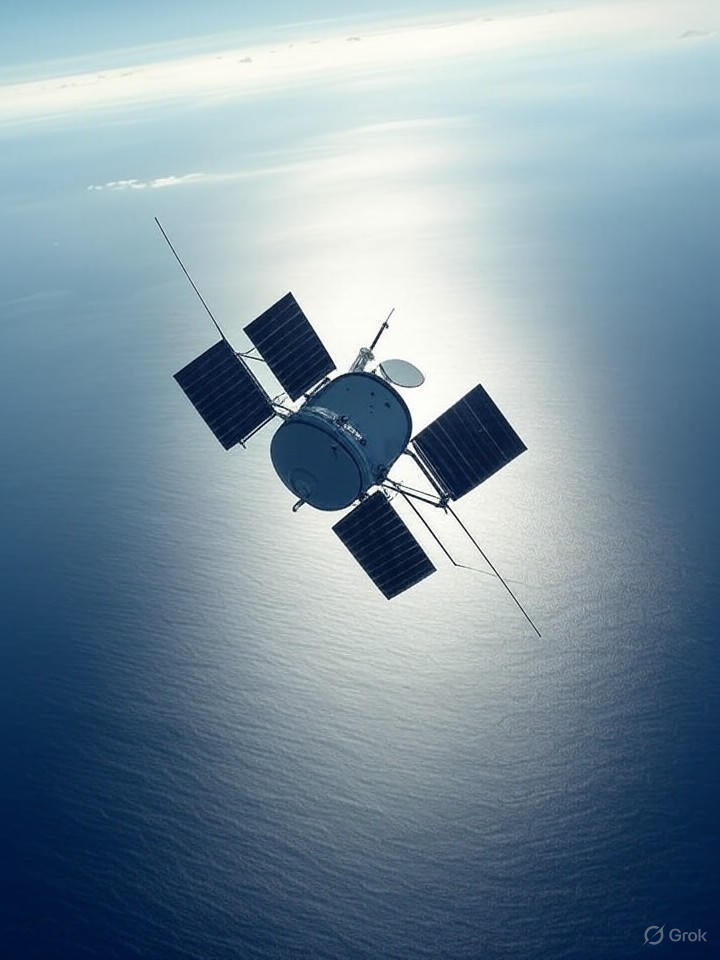In a groundbreaking demonstration of artificial intelligence’s potential in space exploration, a satellite orbiting Earth has for the first time used onboard AI to independently select and capture a scientific image without human intervention. This milestone, achieved through a collaboration between NASA, European startup Open Cosmos, and Irish AI firm Ubotica, marks a shift toward more autonomous spacecraft that could revolutionize how we gather data from orbit. The experiment involved the Hammer satellite, which employed Ubotica’s AI technology to analyze cloud cover in real-time and decide to photograph a clear patch over the Pacific Ocean, bypassing cloudy areas that would have yielded useless images.
The test, conducted recently, highlights the growing integration of machine learning in satellite operations. Traditionally, satellites follow pre-programmed instructions or rely on ground control for targeting, often resulting in inefficient data collection due to unpredictable weather or delays in communication. By embedding AI directly on the satellite, the system processed images on the fly, using a neural network to detect and avoid clouds, ensuring only valuable data is captured and transmitted back to Earth. This not only saves bandwidth but also accelerates scientific insights, as noted in a recent report from The Next Web, which detailed the project’s success.
Autonomy in Orbit: How AI is Redefining Satellite Intelligence and Pushing the Boundaries of Real-Time Decision-Making in Harsh Space Environments
NASA’s involvement underscores the agency’s push for smarter space tech, building on prior experiments like the Mars rovers’ autonomous navigation. In this case, the AI payload, developed by Ubotica, ran on a compact processor designed for the rigors of space, including radiation and power constraints. Open Cosmos provided the satellite platform, a CubeSat launched in 2020, which has been testing various AI applications. According to posts on X (formerly Twitter) from users tracking space innovations, this achievement has sparked excitement among industry experts, with some hailing it as a precursor to fully autonomous satellite constellations.
The implications extend beyond efficiency. For environmental monitoring, disaster response, and climate research, AI-equipped satellites could provide near-instantaneous, targeted imagery—think spotting wildfires or oil spills without waiting for ground teams to sift through terabytes of data. Ubotica’s co-founder, Aubrey Dunne, emphasized in interviews that their CogniSAT platform turns satellites into “thinking” entities, processing data at the edge rather than beaming everything back. This aligns with NASA’s broader strategy, as outlined in updates from Clarksville Online, to deploy AI for dynamic targeting in Earth observation.
Collaborative Innovation: The Role of International Partnerships in Advancing AI-Driven Space Missions and Overcoming Traditional Limitations
The project’s roots trace back to 2022, when Ubotica and Open Cosmos announced plans for an AI-centric satellite, as reported by Silicon Republic. Funded in part by the European Space Agency, it demonstrates how public-private partnerships are accelerating tech adoption. NASA joined to test the AI’s decision-making prowess, simulating scenarios where human oversight is minimal, such as deep-space missions. Recent news from Earth.com describes how the system skipped cloudy views autonomously, focusing on clearer targets.
Looking ahead, this technology could scale to larger fleets. Imagine swarms of satellites coordinating via AI to monitor global events in real-time, reducing latency from hours to minutes. However, challenges remain, including ensuring AI reliability in unpredictable space conditions and addressing ethical concerns over autonomous systems. As Brian Quinn from Ubotica told Electronics Weekly, the goal is actionable intelligence delivered swiftly. With NASA’s enthusiasm evident in their public statements, this test paves the way for AI to become a staple in future missions, potentially transforming fields from agriculture to national security.
Future Horizons: Potential Impacts on Global Data Collection, Ethical Considerations, and the Evolution of Space Exploration Strategies
Industry insiders see this as a tipping point. By minimizing human bottlenecks, AI satellites could democratize access to space data, benefiting smaller nations and startups. Yet, experts caution about over-reliance on algorithms, urging robust testing to prevent errors. Drawing from X discussions, there’s optimism that such advancements will integrate with projects like NASA’s Starling swarm, where CubeSats already operate semi-autonomously. Ultimately, this collaboration between NASA, Open Cosmos, and Ubotica isn’t just a technical feat—it’s a glimpse into a future where space assets think and act independently, unlocking unprecedented possibilities for discovery and innovation.




 WebProNews is an iEntry Publication
WebProNews is an iEntry Publication